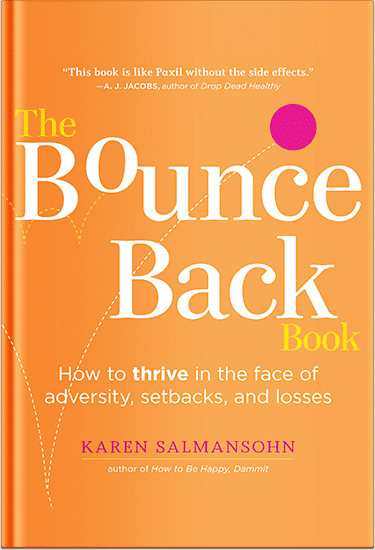 Recovering from sports activities is important for athletes at all levels. It helps them stay healthy and perform their best. Physical therapy is an excellent way to speed up recovery and improve performance.
Recovering from sports activities is important for athletes at all levels. It helps them stay healthy and perform their best. Physical therapy is an excellent way to speed up recovery and improve performance.
Physical therapy involves special exercises and treatments that help heal injuries and prevent new ones.
I’m writing about this topic because I’m a bestselling wellness author and leading Behavioral Change Expert.
Plus I am the founder of the therapist-recommended online program, “The Stop Emotional Eating Course.”
So, I decided to write this article and share about how physical therapy can help athletes recover faster and better. Plus explain why physical therapy should be a regular part of training.
The Role of Physical Therapy in Athletic Recovery
Physical therapy is a secret weapon for athletes who want to return to the game fast after getting hurt. But what does it really do? Let’s dive in and see how it helps:
- Speeds Up Healing: When athletes get injured, their bodies need to heal properly before they can start playing again. Physical therapists use different methods to speed up this healing. They might use special exercises, heat, ice, or machines that help reduce pain and swelling. This means athletes can start training again sooner without risking further injury.
- Helping with Different Injuries: Athletes can face many types of injuries. Physical therapy helps with all these issues. Therapists know exactly what exercises and treatments each type of injury needs. This tailored approach helps ensure that the injury heals the right way.
Physical therapy isn’t just helpful after an injury. It’s also great for keeping an athlete’s body strong and ready, which can help prevent injuries before they even happen.
Key Physical Therapy Techniques for Athletes
Physical therapy offers techniques that help athletes heal and strengthen their bodies to prevent future injuries. Let’s look at some popular methods:
- Stretching: This is one of the basics. Stretching helps muscles stay loose and flexible. It ensures muscles work right and can help prevent injuries like muscle tears.
- Massage: Getting a massage isn’t just relaxing. It is also good for sore muscles. It helps blood flow better, speeding up healing and reducing pain.
- Hydrotherapy: This technique involves water exercises. It’s gentle on the body because water makes you feel lighter. It’s especially good right after an injury when an athlete’s body can’t handle regular workouts yet.
- Strength Training: This isn’t just lifting weights. Physical therapists show athletes how to exercise to strengthen their muscles without hurting themselves. They use resistance bands, body weight, or light weights and focus on doing it right.
- RICE Method: RICE stands for Rest, Ice, Compression, and Elevation. It’s a widely used technique right after an injury occurs.
- Rest is crucial to prevent further damage.
- Ice helps reduce swelling and numb pain.
- Compression involves wrapping the injured area to decrease swelling.
- Elevating the injured part above the heart level also helps reduce swelling by draining excess fluid.
These techniques help athletes recover from injuries and build stronger bodies. This makes them less likely to get hurt in the first place.
Common Injuries and Physical Therapy Treatments
In sports, it’s easy to get hurt, but getting the right help can make a big difference in recovery. Physical therapy is really important for helping athletes get back to playing their best. Here are some common injuries in sports and how physical therapy can help:
ACL Tears:
This knee injury happens often in sports like soccer and basketball, where you stop quickly or change direction quickly. Physical therapy starts by decreasing swelling and pain. Early on, therapists might use ice and do gentle exercises that don’t make the knee work too hard. Later, they help strengthen the knee and the muscles around it. They also get athletes ready to play again with specific exercises.
Sprains and Strains:
Sprains hurt ligaments, and strains hurt muscles or tendons. These are common injuries in sports. Therapists often use RICE, which stands for Rest, Ice, Compression, and Elevation, to help initially. Then, they use exercises to get strength, flexibility, and stability back.
Muscle Strains:
These happen often in sports that need quick, strong movements, like sprinting. Physical therapy for muscle strains includes resting at first, then slowly starting stretching and strengthening exercises. Therapists might also use special machines to help muscles heal and stop hurting.
Rotator Cuff Injuries:
These injuries are common in sports like baseball or tennis, where you use your arms a lot. Treatment starts with exercises to reduce shoulder pain. As things get better, therapists focus on strengthening shoulder muscles and ensuring movements are done right to avoid more injuries.
Shin Splints:
Runners often get shin splints, which cause pain along the front of the lower leg. Treatment starts with ice and rest. Then, therapists work on strengthening exercises for the leg and improving how the foot moves. They might also look at how someone runs to help fix any problems with their running style.
Integrating Physical Therapy into Training Regimens
Physical therapy is not just for recovering from injuries but also for keeping athletes strong and ready to play. Here’s how athletes can make physical therapy a regular part of their training:
- Regular Check-ups: Just like you see a doctor for a yearly check-up, visiting a physical therapist regularly helps catch any minor issues before they become big problems. They can check how your body is moving and make sure everything is working right.
- Pre-Exercise Warm-Ups: Physical therapists can teach athletes special warm-ups that prepare their bodies for exercise. These warm-ups reduce the risk of getting hurt during sports or training.
- Cool-Down Routines: After exercise, cool-down routines help relax the muscles and reduce soreness. Physical therapists know the best cool-down exercises that help the body recover and stay flexible.
- Education on Body Care: Physical therapists teach athletes about taking care of their bodies. This includes things like the right way to lift weights, how much rest is needed, and the best foods to eat for strong muscles.
By making physical therapy part of their regular routine, athletes can get better at their sports and keep playing for a long time without getting hurt.
Conclusion
Physical therapy is a powerful tool for athletes, helping them recover from injuries, stay strong, and prevent new injuries. We’ve learned that it involves different techniques like stretching, massage, and exercises tailored just for athletes. Physical therapists are like coaches for your body, teaching you the best ways to take care of it so you can keep playing the sports you love.
Remember, whether you’re healing from an injury or want to keep your body in shape, physical therapy can make a big difference. It’s not just for when you’re hurt. It’s a smart way to ensure you can keep doing your favorite activities for a long time.
Get More Support To Live Healthy
Explore my bestselling and therapist recommended online course: The Anxiety Cure.
P.S. Before you zip off to your next Internet pit stop, check out these 2 game changers below - that could dramatically upscale your life.
1. Check Out My Book On Enjoying A Well-Lived Life: It’s called "Your To Die For Life: How to Maximize Joy and Minimize Regret Before Your Time Runs Out." Think of it as your life’s manual to cranking up the volume on joy, meaning, and connection. Learn more here.
2. Life Review Therapy - What if you could get a clear picture of where you are versus where you want to be, and find out exactly why you’re not there yet? That’s what Life Review Therapy is all about.. If you’re serious about transforming your life, let’s talk. Learn more HERE.
Think happier. Think calmer.
Think about subscribing for free weekly tools here.
No SPAM, ever! Read the Privacy Policy for more information.
One last step!
Please go to your inbox and click the confirmation link we just emailed you so you can start to get your free weekly NotSalmon Happiness Tools! Plus, you’ll immediately receive a chunklette of Karen’s bestselling Bounce Back Book!


 Recovering from sports activities is important for athletes at all levels. It helps them stay healthy and perform their best. Physical therapy is an excellent way to speed up recovery and improve performance.
Recovering from sports activities is important for athletes at all levels. It helps them stay healthy and perform their best. Physical therapy is an excellent way to speed up recovery and improve performance.